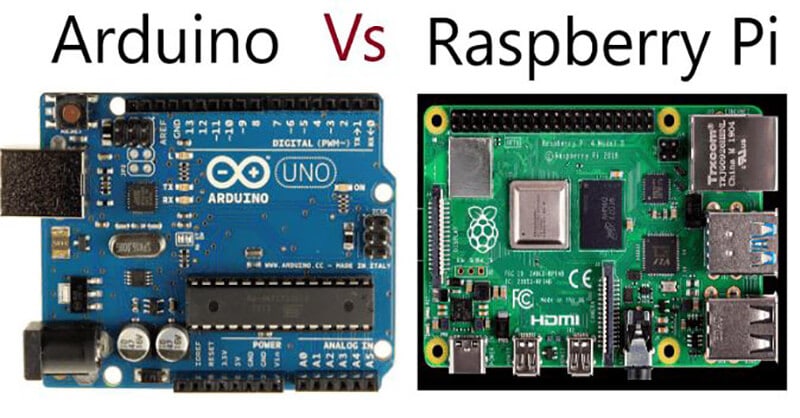

- #ARDUINO IDE RASPBERRY PI 4 INSTALL#
- #ARDUINO IDE RASPBERRY PI 4 SERIAL#
- #ARDUINO IDE RASPBERRY PI 4 SOFTWARE#
- #ARDUINO IDE RASPBERRY PI 4 CODE#
- #ARDUINO IDE RASPBERRY PI 4 DOWNLOAD#
Click on the right-arrow on the toolbar to begin the compile and upload process. If you have used the Sleepy Pi setup script you DO NOT need to do this. To upload a test program that will make the LED on the Arduino blink, select the File menu and then click “Examples, Basic,” and finally click Blink. Setting up the Arduino IDE on Raspbian and Raspberry Pi OS.
#ARDUINO IDE RASPBERRY PI 4 SERIAL#
Then, from the Serial Port option, select /dev/ttyACM0. Having been first launched in 2005, Arduino is the older of the platforms we are covering today. From the Tools menu, select Board and set the board type to Arduino Uno. You can now connect your Arduino to your Raspberry Pi. If you have not previously disabled your serial console and are relying on the preceding script to do it, then you will need to reboot for this change to take effect.
#ARDUINO IDE RASPBERRY PI 4 DOWNLOAD#
To download and run this script, follow these steps: $ wget This has the advantage that it also sets up the aLaMode board to be ready for use ( “Getting Started with an aLaMode Board and a Raspberry Pi”). You can follow “Freeing the Serial Port” to do this, but a second option is to run a script created by Kevin Osborn that both disables the serial console and configures the serial ports and Arduino profiles necessary to get things running. This connection also requires that the serial console be disabled. The Arduino IDE connects to the Raspberry Pi through its USB cable to program it. They can still be used with the Raspberry Pi, but you will need some other computer to program them before connecting them to the Raspberry Pi.Īfter installation, you will find an Electronics group in your Programs menu ( Figure 10-1).
#ARDUINO IDE RASPBERRY PI 4 INSTALL#
Use these commands to install it: $ sudo apt-get updateĪt the time of writing, this installs version 1.0.1, which is not the latest version but will suit the Arduino Uno it will not, however, work for newer boards like the Leonardo and Due. Languages using left-hand whitespace for syntax are ridiculous. The Arduino IDE is available for the Raspberry Pi. Step 1 Install Arduino IDE on Raspbian Step 2 Connect resistors and leds Step 3 Connect LED to Ground Rail and Arduino Step 4 Connect PIR sensor to Arduino. boylesg wrote: I tried to run 'sudo apt-get install arduino' again to get the original libraries back again but wont re-install the package like windows would. You want to run the Arduino IDE on a Raspberry Pi so that you can write and upload programs onto an Arduino. Hi, thanks for your well explained post to use arduino-cli on RaspberryPi. The built-in LED will start blinking at a rate of 1 second.Programming an Arduino from Raspberry Pi Problem Did you know that the Arduino IDE can be run from the command line This means.
#ARDUINO IDE RASPBERRY PI 4 CODE#
the loop function runs over and over again foreverĭigitalWrite(25, HIGH) // turn the LED on (HIGH is the voltage level)ĭigitalWrite(25, LOW) // turn the LED off by making the voltage LOWĬlick on upload button to upload the code to Raspberry Pi Pico. initialize digital pin LED_BUILTIN as an output. And not all pins are up for grabs, of course, such as power and ground. The numbering convention used by Arduino uses the actual pin position in the header of the Raspberry Pi. the setup function runs once when you press reset or power the board Basically you just have to connect your device (selecting the Pi option) via the Arduino Create interface, entering the IP address and a name and the access credentials. This example code is in the public domain. Therefore specify GPIO25 as the built-in LED. Arduino IDE is an open-source software, designed by and mainly used for writing, compiling & uploading code to almost all Arduino Modules. Note: Make sure, you have installed the latest version of Arduino IDE before proceeding further. The onboard LED is connected with GPIO25 in Raspberry Pi Pico. Install Raspberry Pi Pico board in Arduino IDE.


I’m assuming you have a working installation of a recent Raspberry Pi OS image.
#ARDUINO IDE RASPBERRY PI 4 SOFTWARE#
Go to File > Examples > Basics > Blink to open a built-in example sketch that blinks the onboard LED of the microcontroller. So I recommend manually installing the Arduino IDE using the software available from the official Arduino site. So I recommend manually installing the Arduino IDE using the software available from the official Arduino site.


 0 kommentar(er)
0 kommentar(er)
